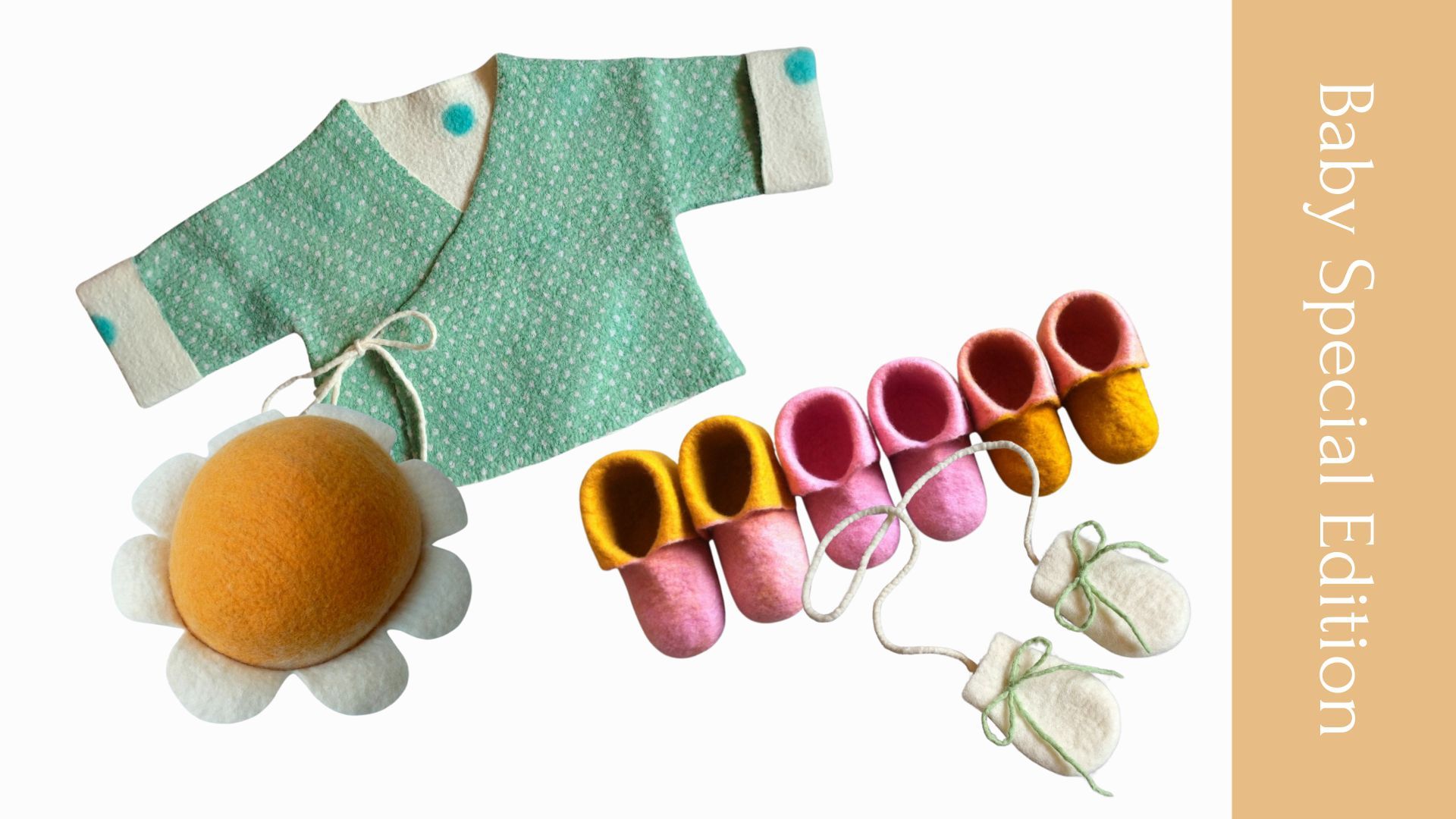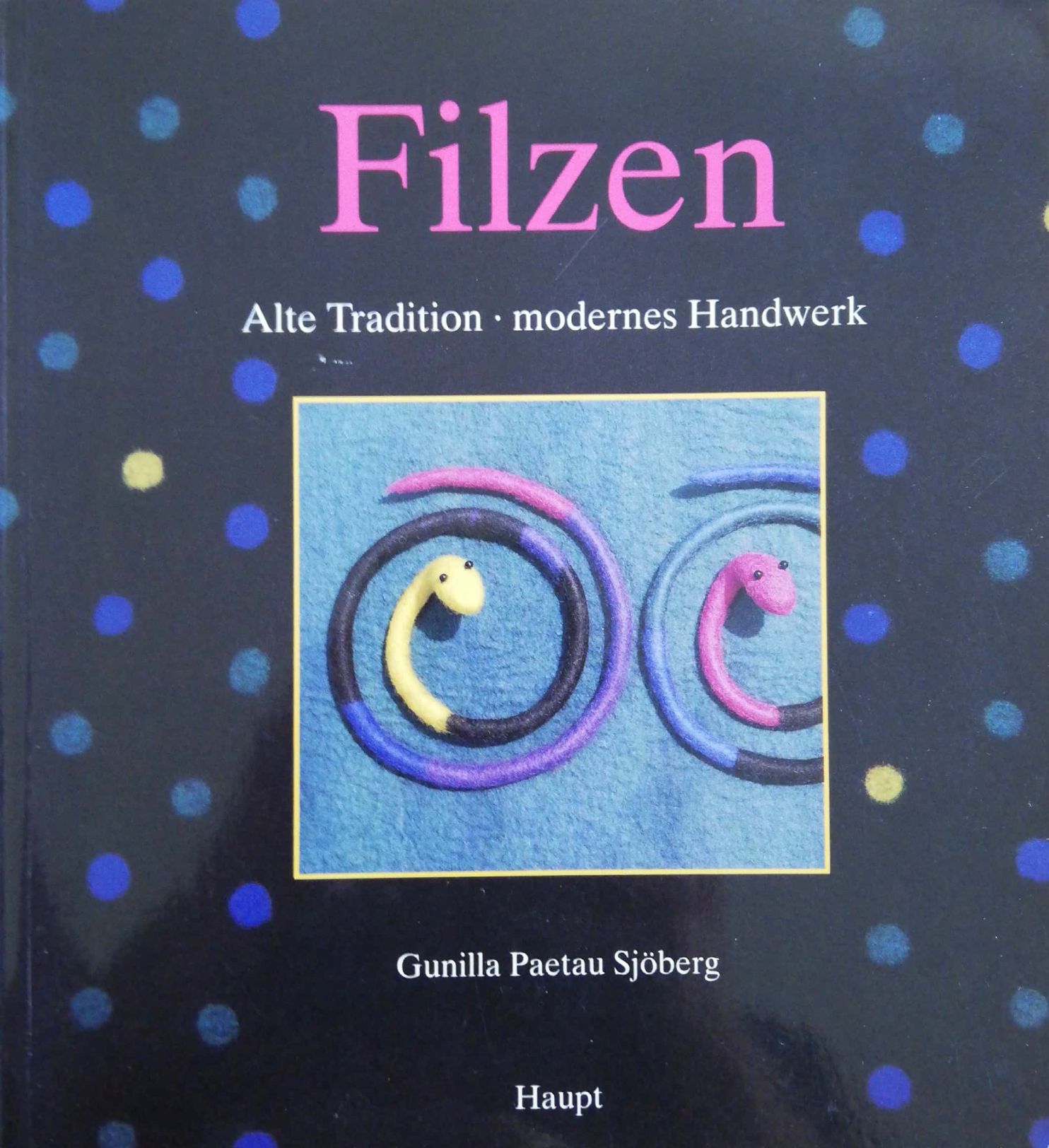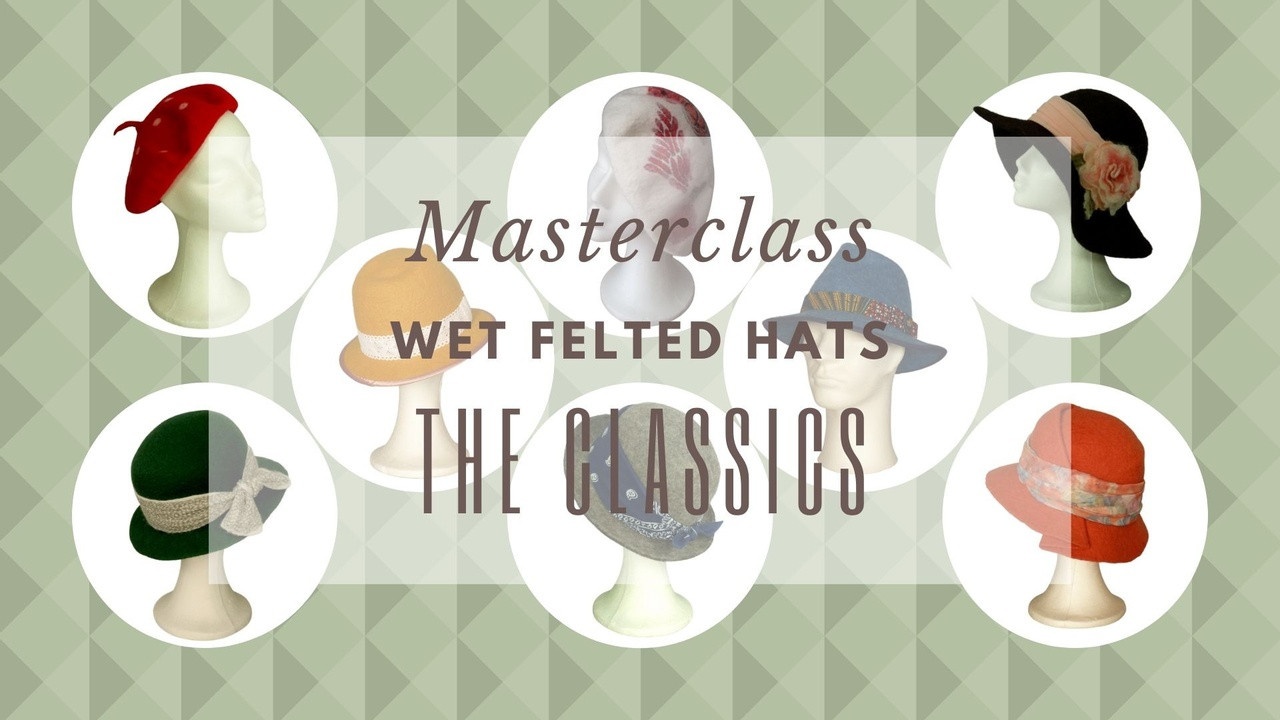The Dodo Blog
What would you like to know about resists for wet felting?

About two years ago, I taught a class called RESISTS MADE EASY – A PROVEN SYSTEM TO DESIGN RESISTS FOR WET FELTING.
It covered how to make resists for shoes, clothes, hats, bags, gloves and vessels in all sorts of shapes.
It was well received and fun to teach. But, next, I started focusing more on 3D felting and so, I haven't come back to this class since.
Lately, I’ve had people asking about it, so I’m considering teaching it again.
This time, my idea would be to make separate classes for each of the topics (shoes, clothes, hats and vessels), but to go into a bit more detail. For example, I’m thinking about covering things like the ideal fiber for each type of piece.
Before I redesign the classes, I’d like to see how much interest there is. So, if this sounds like something you’d be interested in, could you email me or send me a message on social media, answering these two questions?
- Which type of resists would you like to learn to make?
- Which specific questions do you have a ...
What’s inside the Baby Special Edition?
This is a question I know you’re asking yourself: Is the Baby Special Edition worth it?
That’s, of course, something only you can decide. But skimming through the class description will only give you a general idea. So, I’ve made a video to show you exactly what’s inside the “baby package”.
It’s divided into 4 parts:
Part 1 includes the step-by-step video instructions, that walk you through all you need to know to felt your baby's jacket in 3 design variations and 3 sizes to keep up with your baby’s growth. You’ll get:
- 5 PDFs with the pattern in 3 sizes (0 to 3 months, 3 to 6 months and 6 to 9 months) and the 3 design variations
- PDF with the instructions on how to use the patterns
- PDF with introduction to the course
- PDF with video transcripts
- 12 downloadable videos
In Part 2 you get the step-by-step video instructions showing you how to make a baby hat in 6 sizes that you can change in color and shape to create different designs. You’ll get:
- PDF with pattern in 6 si...
Special price for a limited time

Today I’m bringing you something special, the Baby Special Edition.
Usually, you can only get these classes separately.
Now, for a limited time, I’m combining the Sweet Baby Jacket & Daisy Baby Hat with the Comfy Baby Booties & Tiny Baby Mittens in one package. In other words, you get 2 for the price of 1.
If you’re interested in felting baby items as gifts for family members, friends or to sell, this Baby Special Edition is for you.

Wet felt your baby booties, mittens, jackets & hats!

Have you noticed the BABY classes are back?
Many of you have been asking to have the baby booties class separately. You’ve also showed interest in having it available “on demand”, which is understandable, since babies grow fast 😊
So, I’ve listened to your requests and created two separate classes: “Comfy Baby Booties & Tiny Baby Mittens” and “Sweet Baby Jacket & Daisy baby Hat”. They’re already available and can be purchased at any time.
They’re now in a DIY version, and the videos and PDFs are downloadable. Just click on the images below to be taken to the course information.
Whether you’re planning to enroll in the class or not, here’s some information that may be useful for you.
As I reopened the baby courses to enrolment, it was brought to my attention that some of the designs are not compliant with the safety standards of many countries. I was very grateful for these contacts, since this is something I was previously unaware of.
I decided to do some internet research to un...
"How I Felt" - a must have wet felting book
If you’ve been in my felting world for some time, you’ve heard me talking about this book for sure. It’s one of my absolute favorites in my collection.
If you’ve just recently discovered my blog, and you’re as obsessed about felting books as I am, there’s still time to add it to your Christmas presents wish list :)
I’m talking about “How I Felt”, a book about the work of the late Christine Birkle.


 There are many felt makers I admire. But after over 20 years of looking at other artists’ work, Christine Birkle is still number one for me.
There are many felt makers I admire. But after over 20 years of looking at other artists’ work, Christine Birkle is still number one for me.

She founded the label HUT UP in Berlin in the 90s and was an absolute pioneer of modern wet felting. She has created many of the designs that inspired much of what is currently around in our field.

I was extremely lucky to have come across her work in Berlin in the early 2000s and have spent many hours admiring her pieces live in her shop in Berlin.


I’ve always been fascinated by Christine’s use of color and transparency, and the way she ma...
Wet felting book review
"Filzen: Alte Tradition, Modernes Handwerk" (German version)
"Felt: New Directions for an Ancient Craft" (English version)
by Gunilla Paetau Sjöberg

This might be the best book about wet felting I have. And I do have many 😊
It’s over 20 years old, it doesn’t have amazing photos and it has a lot of text. So, it might not be the first book to grab your attention when you look at my bookshelf.
I have it in German, but there’s also an English version.
So then, what makes it so special?
I think it’s the most complete wet felting book I’ve ever seen. I could call it a felting encyclopedia.
Let’s have a look inside, so that you can see what I mean.
It starts with an incredibly complete History of felt and it covers different felting traditions found in Europe and Asia: from hat making in Hungary and shepherd coats in Turkey, to the felt masks worn by the Vikings, and socks and shoes made in Sweden, Norway, and Finland.


It then dives into felting techniques from other cultures: ...
Don't cut your felt. Here's what to do instead.
Did you learn to felt 3D objects by laying out the wool around the whole resist? I did. And so did most felt makers. And it’s probably the easiest method to follow when you’re starting out and still don’t feel confident enough to try a more complex layout method. It works perfectly for round vessels for example.
But here’s an issue that showed up for me when I was only working with “closed” felt pieces: how do I add handles to a bag when I have a closed felt shape? That was a tricky one to solve…

This was the moment I decided it was time to try felting around a resist without closing the felt. And that’s when I finally found the solution to adding perfect handles to my bags!
But, in this process, I discovered something else. I found out that the edges of my felt looked waaaay better than when I had to cut them and heal the cuts.

How many times have you cut your felt, tried to heal the cut, and one (or more) of these things happened?
- The felt looked like it was fraying, no ma ...
Enrollment For The Masterclass Starts Tomorrow

Just wanted to let you know you can enroll for the Wet Felted Hats Masterclass from May 15th to May 19th.
The course will start May 22nd and will have a duration of 8 weeks.
If you've been wanting to improve your hat felting skills, stay tuned for the details tomorrow :)
Talk soon!
Vanda
Wet Felted Hats Masterclass – Enrollment Starting In A Few Days
As you might know, I created a new course recently: the Wet Felted Hats Masterclass for all of you who’d like to refine your hat making skills.
There was a first edition in February/March, which I launched as a test course. I had built a base structure and invited people to join as Founding Members to help me fully develop the best class possible. So, it grew considerably, since I added new modules, videos and other resources. And now it’s ready for the second edition.
The enrollment will start in a few days, so I wanted to let you know what the Masterclass now looks like.
This next edition will include a total of 9 modules, walking you through:
- How to draw your own patterns with the right size
- How to modify the base patterns to create new hat shapes
- How to felt ANY hat WITHOUT a hat block
- How to felt a hat WITH a hat block
- How to create the perfect brim
- How to lay the wool so that you don't have to cut the brim
- How to embellish the hat surface with nuno felt
- How to cre ...
Something I Wish I Knew When I Started Felting
When I first started wet felting, there where no YouTube videos and barely any books on the subject. I bought everything I could get my hands on and started experimenting. But most things on the market were very simple. So, for the most part, I learnt through trial and error.
One of the topics that nobody was going into in detail was the correct laying of the wool fibers. And, as I see it, that’s probably the most important thing you can learn about in wet felting. Sure, you do get felt no matter how well you lay your wool. But how good is your felt then?
This becomes more important if your piece needs a fair amount of shaping or if you’re making clothes, which need to adapt to your body.
So, what is the correct way to lay wool fibers?
First of all, wool for wet felting should be laid according to the shape of the piece. Let me use the example of a circular piece, like a beret. Would you lay your wool like this?

Well, you could. As I was saying, you will get a piece of felt in ...




